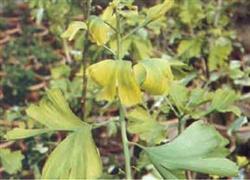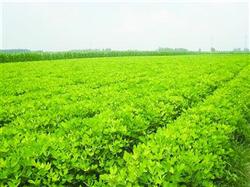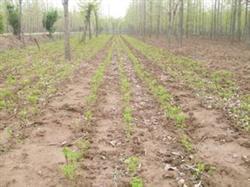Key points of fertilization Management of Ginkgo biloba

1. Ginkgo biloba needs to absorb different nutrients at different stages of growth and development, of which N, P and K account for about 45% of the dry weight of the tree. Although the proportion of trace elements is small, it is also essential. Second, the type and use of fertilizer. 1. Application of base fertilizer. Base fertilizer mainly uses organic fertilizer, which has all nutrients, and can improve soil structure, such as stable manure, compost, chicken, cow, manure, etc., generally applying 2000,000kg per mu, and the suitable time is from September to October. When applied early after autumn, the soil temperature is higher, which is beneficial to the healing of root wounds and the growth of new roots. Enhance the absorptive capacity of roots in the early spring of the second year. 2. Topdressing at the right time. Topdressing is also called topdressing, which is beneficial to strong trees, high yield and high quality in that year, and replenish nutrients for flowering and fruiting in the second year. The characteristics of top dressing of ginkgo trees are as follows: first, the type and quantity of topdressing are not limited; second, the growth time of new shoots of ginkgo biloba is long and short, and increasing the number of branches and leaves is its main contradiction. Therefore, the time requirement of topdressing is relatively strict, the principle of topdressing is mainly in the early growth stage, more than 70% of the fertilizer should be used in the early stage, and can be properly supplemented in the middle and later stage. Third, ginkgo biloba has a variety of business purposes, such as picking leaves, harvesting fruits, producing wood, green ornamental and so on. Therefore, the time, quantity and mode of topdressing vary greatly. Generally speaking, it is best to apply fertilizer three times a year, in spring in mid-early March, in the early stage of new root growth, the root absorption capacity is weak, while leaf expansion, flowering and other nutrients are consumed, mainly nitrogen fertilizer and proper addition of phosphorus fertilizer; summer in mid-early May. Just after the flowering period, the fruit grows rapidly, which is the peak period of new shoot growth and consumes a lot of nutrients, which is still dominated by available nitrogen fertilizer combined with a small amount of phosphorus fertilizer; autumn is about the middle and late July, when the seed is in the hard kernel stage, in order to improve the seed quality and yield, it needs the mixed application of nitrogen, phosphorus and potassium. Matters needing attention in fertilization 1. Scientifically determine the amount of fertilizer application due to many factors that affect the amount of fertilizer application, such as tree potential, yield, tree age, variety, soil, climate and management level. Therefore, it is necessary to comprehensively consider many factors and put forward a reasonable fertilization scheme. At present, the amount of scientific fertilizer application is determined according to the nutrient status of trees. The application of leaf nutrient analysis is a reliable basis to determine the amount of scientific fertilizer application, and the nutritional status of leaves is used to judge the nutritional level of trees. But most fertilization is based on practical experience. 2. The best time for extra-root topdressing is in the evening, and the absorption and utilization of roots are high before and after evening. In addition, it is best to do it after it rains. 3. Pay attention to some incompatibility taboos in the process of topdressing. For example, acidic fertilizers can only be used with acidic pesticides, but not with alkaline pesticides.
- Prev

Application of several growth regulators on peanut
Peanut growth regulators can promote seedling growth, fruit weight increase, early maturity and high yield. At present, there are two kinds of growth regulators: one is growth promoter containing trace fertilizer and hormone, the other is growth inhibitor to control growth and prevent lodging. 1, Growth promoter
- Next

Drainage and irrigation management of Ginkgo biloba
In recent years, the production of Ginkgo biloba has developed rapidly, and there is a great demand for seedlings, but the breeding cycle of seedlings is long, which is not conducive to production. The use of cutting to raise seedlings can save seeds, avoid the grafting process, reduce the cost of raising seedlings, and the breeding speed is fast. It is reported that the treatment of Ginkgo biloba cuttings with low concentration rooting powder can promote its rooting.
Related
- Fuxing push coffee new agricultural production and marketing class: lack of small-scale processing plants
- Jujube rice field leisure farm deep ploughing Yilan for five years to create a space for organic food and play
- Nongyu Farm-A trial of organic papaya for brave women with advanced technology
- Four points for attention in the prevention and control of diseases and insect pests of edible fungi
- How to add nutrient solution to Edible Fungi
- Is there any good way to control edible fungus mites?
- Open Inoculation Technology of Edible Fungi
- Is there any clever way to use fertilizer for edible fungus in winter?
- What agents are used to kill the pathogens of edible fungi in the mushroom shed?
- Rapid drying of Edible Fungi

